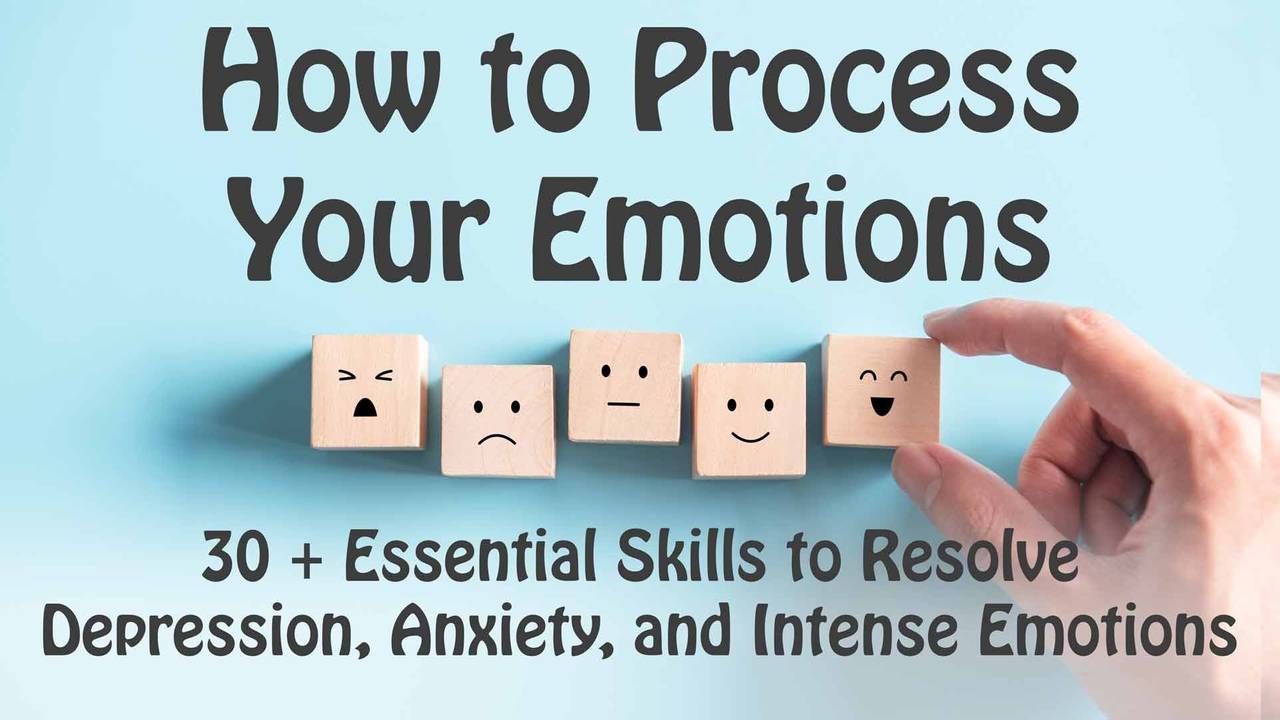Neuroplasticity shows that your brain can change. When you change how you think you can physically change your brain’s structure and chemistry. And that means that when you change how you think, you can change how you feel.
When you change how you think, you change how you feel. In this post you’re going to learn about neuroplasticity: how you can change the structure and chemistry of your brain by changing how you think.
Change How You Think - Change How You Feel
You’re hurrying to work, running a little late, but you know that it’s your coworker’s birthday today, and she loves donuts. So you decide to make a quick stop to the best donut shop in town to pick up some donuts for the office. If you hurry, you’ll make it in time for the first meeting with a few minutes to spare.
You go into the store and it smells delicious, and there’s only one guy in front of you. You start planning out your order, but the guy in front of you is taking forever. He can’t seem to make up his mind. He keeps asking dumb questions, like “What is on that donut? Which donuts have crème inside? Do you have any donuts with sprinkles?”
The donuts are right there in front of him. If he just looked at them and the signs he would know what was in them.
As your frustration mounts, you start to feel worried about the time. You’re probably going to be late now. “What is taking him so long!” you think. “Why can’t he just pick some donuts!?!”
Now he’s asking if they have any strawberry donuts. “They are right in front of you!” you scream silently inside of your own head. Now you’re angry. What’s the matter with these people? At the very least he could see that I’m waiting and step aside while he tries to decide. He’s such a rude guy. And stupid too.
“Aargh, this is so irritating!” You’re furious! With the help of the worker, he finally fills his box and turns to pay. And that’s when you see that he has a cane, and not just any cane — a long white cane with a red tip. The man in front of you is blind.
Suddenly your anger melts away. Instead of impatience, you feel compassion for him — and a little ashamed of yourself. The minute you realize that he’s not being rude, dumb, or slow, but instead he’s actually doing the very best he can with his abilities, you feel completely different. Your anger disappears, and you’re filled with a completely different feeling.
But what has changed? You’re still late. It still took the guy in front of you eight minutes to order his donuts. You’re still in the donut shop. What changed?
It wasn’t your circumstances that changed how you feel. It was your paradigm shift, or how you thought about the situation that changed. You went from thinking “This guy is a jerk,” which made you feel angry, to thinking “This guy is impressive for being so independent with a disability,” which made you feel a sense of kindness, awe, and a whole lot more patience.
Max Planck said “When you change the way you look at things, the things you look at change.” When you change how you think, you change how you feel. This post is #16 in my course How to Process your Emotions. This post is the introduction to Section 3. This entire section of the course is about changing how you think.
Neuroplasticity Defined
You were born with a brain wired for change. Scientists and psychologists used to think that after you were about 20, your brain was set in stone and there wasn’t much that could be done to change it. But new research and new imaging technology have demonstrated that when you change how you use your brain, you can actually change the physical structure and chemistry of your brain.
This is called neuroplasticity: neuro meaning brain and plasticity meaning flexible or changeable.
Neuroplasticity makes your brain extremely resilient and is how all learning takes place. It’s how you learn to speak and how you learn to walk or play an instrument. It’s also how you learn from your childhood environment whether the world is safe or threatening.
As a child your brain is extremely flexible, and as you get older some things get more hardwired, but there is always room for growth. And that’s because your brain is wired for change. It’s built to adapt to new circumstances and new ways of thinking.
Neuroplasticity enables people to recover after a stroke or a brain injury by using different parts of their brain to perform tasks. Neuroplasticity makes it possible for people to “improve symptoms of autism, ADD, learning disabilities, and other brain deficits. Neuroplasticity makes it possible to pull out of depression and addictions and reverse obsessive-compulsive patterns.”
Examples of Neuroplasticity
Daniel Kish was born with the ability to see, but lost his eyesight as a baby. He learned to use echolocation to navigate. He’s completely blind, but he can ride a bicycle safely. He makes clicks with his mouth and listens for the echo to know where objects are around him.
Brain scans revealed that his brain adapted the visual cortex — the seeing part of the brain — to be able to process sounds instead of light.
Here’s another exciting example:
Talk therapy changes your physical brain. There’s a lot of research on this — studies have shown that eight weeks of therapy can increase the size of the hippocampus. This is the part of the brain that processes emotion and memory. It can also decrease the size of the amygdala, the fear center of the brain. When we change how we think and act, we can actually physically change our brains.
Cognitive Behavioral Therapy is essentially talk therapy. It focuses on changing how you think and how you act. CBT has been shown to be very effective at treating mental illness. It’s one of the most effective treatments — as effective as medication, but with long-lasting benefits and less physical side effects.
Bushwhacking Neural Pathways
So how do we change how we think? Here comes a metaphor:
Your brain is like this sand hill. As we grow and develop, our way of thinking and our understanding of the world is formed just like the channels that water makes as it runs down the sides of the hill.
Some of this is impacted by our environment. So, for example, the language we learn, the culture we grow up in, or whether the home environment we grow up in is safe or frightening.
And some of it depends on our biology: the personality we are born with, whether we are more sensitive or not. This impacts how we interpret our environment. And then after that, every experience we have and how we interpret it, these are like the rivulets that form on this sand hill.
So, for example, if you were taught as a child that everything is dangerous, that bugs are scary for example, then as a kid you’re going to develop a more sensitive fear response. That fear pathway is going to flow quickly and easily for you, and that’s going to make it easier for you to feel fear or anxiety as an adult when you see a bug.
But if as an adult you decide you want to overcome that anxiety and you start doing exposure therapy with bugs, then eventually your brain learns that grasshoppers are safe, and it starts using new neural pathways, and you don’t feel so anxious anymore.
The more you think something or the more you experience something, the deeper those channels grow. In your brain these are neural pathways, the channels that our thoughts run along.
The ones we use the most become smoother, faster, and wider. The ones we don’t use much eventually get trimmed off.
So if you have a habit of constantly looking for the negative, it’s easy for you to see all the bad in the world, and those brain connections are strong and smooth. But if you start practicing looking for the positive, your brain starts to rewire and makes it easier and easier over time to see the good in the world.
When we decide to change how we think, it’s like trying to get water to run down this hill in a different way than it has been running. This is difficult work because the old ways of thinking are easier, but little by little we can create new ways of thinking, new neural pathways, and this eventually becomes easier than our old ways of thinking.
I once worked with a client who had symptoms of OCD. He would worry that his hands were dirty, and then he would compulsively wash them, sometimes over and over, to the point that they dried out and cracked and bled. He always felt that he needed to change his clothes and take a shower, and he didn’t like touching anything, which kinda got in the way of his relationship with his girlfriend, whom he really wanted to touch.
Anyways, we started working on Exposure Response Prevention, changing how he thought about his compulsions and understanding the nasty cycle of avoidance (compulsions are a form of anxiety avoidance).
We worked on the skill of cognitive defusion and delaying the handwashing as long as possible, and the longer he went without washing his hands, the more he began to learn that it wouldn’t hurt him.
His brain started to learn that he didn’t have to believe his obsessive thoughts, and as he worked hard to practice willingness with his fears, they gradually didn’t have so much power over him.
Now, a year later he no longer obsessively washes his hands, and he’s learned that anxiety doesn’t have to control his life. Sometimes he still gets anxious thoughts or feelings, but they just don’t impact him as much as they used to. He has changed his brain.
Neuroplasticity means your brain is wired to change. When you change how you think, you change how you feel. In the next eight posts you’re going to learn how to change how you think by learning about cognitive distortions, reframing, cognitive defusion, self-justification, mindfulness, and more.
This is part of a 30-section course, How to Process Emotions. Check out the full course with added bonuses below.





